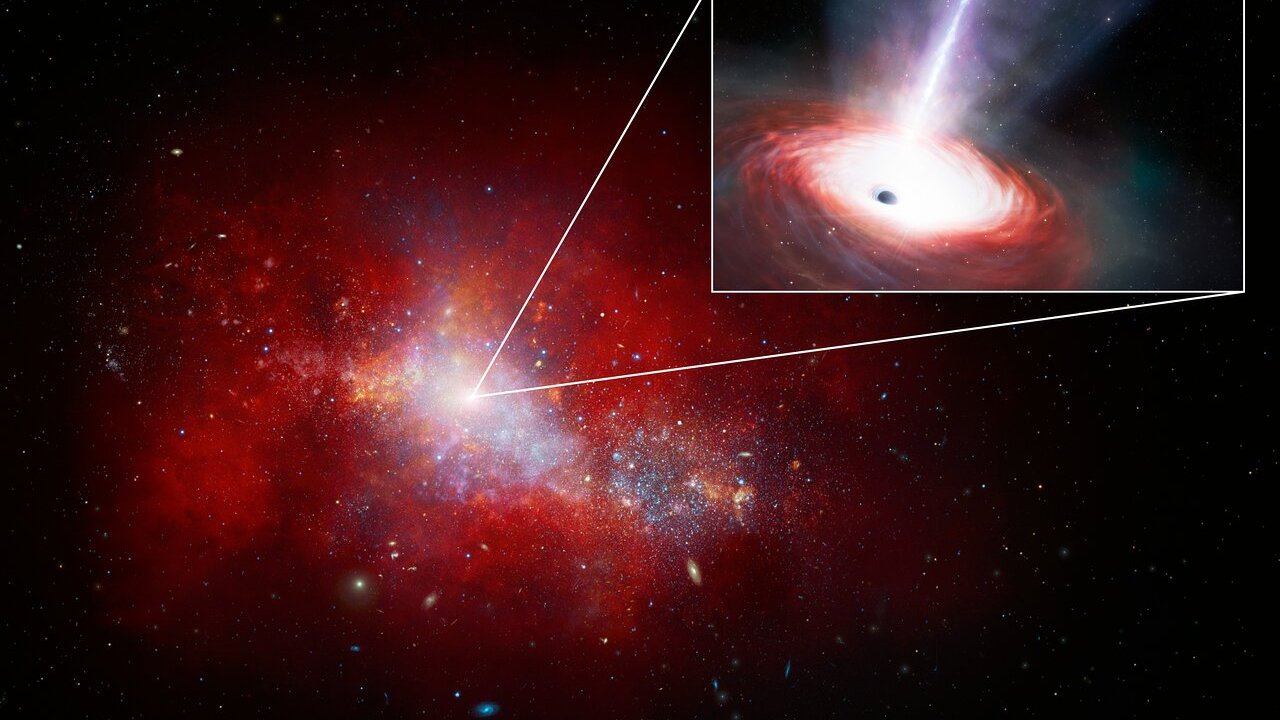Astronomers have uncovered a celestial phenomenon that could rewrite our understanding of black hole growth and cosmic development. By combining the observing power of NASA’s James Webb Space Telescope (JWST) and the Chandra X-ray Observatory, researchers have identified what may be the most ravenous black hole witnessed from the early universe. Dubbed LID-568, this hungry behemoth devours matter at an unprecedented rate, presenting fascinating implications for the laws of physics.
Table of Contents
ToggleThe Astounding Discovery of LID-568
In the cosmos’s youth, around 1.5 billion years after the Big Bang, astronomers identified LID-568, a black hole distinguished by its energetic dining habits. At a time when the universe was still in its formative stages, this black hole’s distinctive X-ray brightness heralded its presence, even though it remained cloaked from regular optical views. JWST’s cutting-edge infrared technology enabled scientists to reveal the avid consumption details of this celestial entity.
Breaking Barriers: The Eddington Limit
Central to the black hole feeding phenomenon is the Eddington limit—a theoretical cap on the amount of matter a black hole can ingest when radiation interference might stall the incoming mass. Yet, LID-568 challenges this boundary by engulfing material at rates 40 times this limit, a process known as super-Eddington accretion. Although daunting, such massive consumption isn’t entirely without precedent, as super-Eddington phases are known to sustain briefly before feedback effects disrupt further intake.
Revisiting Black Hole Growth Theories
LID-568 could be pivotal in comprehending how supermassive black holes ballooned quickly in the universe’s infancy. The notable rapid rise in mass implies that rather than a cautious, gradual accumulation of matter, black holes might have had significant growth spurts during intense feeding bouts.
Innovative Observational Details
The JWST’s Integral Field Spectrograph was crucial in capturing LID-568’s dynamics, detecting outflows coursing at hundreds of kilometers per second. Additionally, the unexpected luminosity of its X-ray emissions at such an early cosmological stage underscores the intensity of its ingestion rate, marking it as an extraordinary specimen among its cosmic peers.
Origin and Evolution of LID-568
Speculations about LID-568’s beginnings suggest it emerged as a “light” seed black hole with close to 100 solar masses, commencing its voracious phase some 12 million years earlier. Stationed amidst a colossal molecular gas cloud, it’s engaging a spiral of rampant consumption. As this phase cannot continue indefinitely, astrophysicists predict the Eddington limit will eventually regulate its pace, though episodic super-Eddington feeding might be possible.
Future Research and Its Impact
With LID-568 providing a window into the dynamics of early black holes, astronomers are eager to delve deeper. Future JWST observations aim to elucidate how such entities sustain their vigorous growth without succumbing to instability, potentially influencing our understanding of galaxy formation. This exploration could shift paradigms in black hole growth models, offering insight into the intricate dance between accretion and cosmic development.
Limitations and Conclusions
While this study marks a significant leap in astrophysical research, challenges remain. Deciphering the origin of detected outflows—whether from merging galaxies or intrinsic black hole activity—presents doubts. Moreover, single-epoch mass estimates of LID-568 carry inherent uncertainties, and applying a continuous super-Eddington model universally may require further scrutiny.
The findings surrounding LID-568 underscore the complexities of black hole growth in the early universe, interweaving rapid accretion phases with theories of massive black hole formation and galactic impact. Such discoveries champion the notion that black holes can briefly exceed the conventional growth limits predicted by Eddington theories, thereby influencing their host galaxies’ evolution.
As we venture further into the mysteries of our universe, this research stands to challenge preexisting theories, paving a path for future discoveries. To read more groundbreaking stories like this, be sure to visit my blog, Frozen Leaves News .
For further information on this remarkable black hole discovery, refer to the sources provided from NASA and other reputable astrophysical studies:
Source






